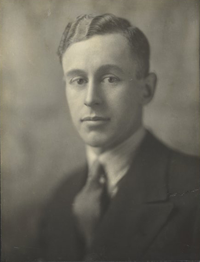Chinnery Collection
Ernest William Pearson Chinnery (1887-1972) was born in Waterloo, Victoria, and educated at state schools. In 1909 he joined the public service in Papua as a clerk and in the following year he was appointed a patrol officer. He worked first in the Kumusi division and later patrolled in new country in the central division, where he discovered the source of the Waria River. In 1917 he joined the Australian Flying Corps. He was demobilized in England in 1919 and became a research student under the anthropologist A.C. Haddon at Cambridge University.
Dalrymple Collection
Alexander Dalrymple (1737–1808) was born at Newhailes, Scotland, and educated at a school in Haddington. In 1752 he was appointed a writer in the East India Company and was posted to Madras. He became interested in trade with South-East Asia and made three voyages to the Philippines, Borneo and Sulu. He resigned in 1763 and returned to London in 1765, where he carried out research on the exploration of the southern oceans. His first book was published in 1767.
Royal Society of Edinburgh Admiralty Charts Collection
The Hydrographical Office of the British Admiralty was created in 1795, one of its functions being ‘collecting and compiling all information requisite for improving Navigation, for the guidance of commanders of His Majesty’s ships’. Alexander Dalrymple was the first hydrographer. In 1808 he was succeeded by Thomas Hurd, who instituted a regular series of marine charts. The first Catalogue of Admiralty Charts was published in 1825.
Braga Collection
The forebears of José Maria Braga left Portugal in 1712 and settled in the colony of Macau. Two of his great-grandfathers moved to Hong Kong when the colony was established in 1842. His father José Pedro Braga (1871–1944) was a businessman, journalist and the first Portuguese member of the Hong Kong Legislative Council. José Maria Braga (1897–1988) was born in Hong Kong and educated at St Joseph’s College. In 1913 he joined the staff of the Hong Kong & Shanghai Banking Corporation.
Beyer Collection
Henry Otley Beyer (1883–1966) was born in Edgewood, Iowa, and was a graduate of Denver University, where he studied chemistry. In 1905 he arrived in the Philippines and, while working as a teacher, studied the Ifugaos of the Banaue Valley of northern Luzon. In 1908–09 he carried out research in Asia, North Africa and Europe and undertook graduate studies in anthropology at Harvard University. In 1909 he returned to the Philippines and was appointed ethnologist in the Bureau of Science. He carried out fieldwork among the Ifugaos, Igorots, Apayaos, Kalingas and other peoples.
Bates Collection
Margaret Dwyer (1859-1951), the daughter of a shopkeeper, was born in Roscrea, County Tipperary, Ireland, and educated at Air Hill National School. After leaving school, she may have worked as a governess in England. In 1882, having adopted the name Daisy O’Dwyer, she sailed from Plymouth on a free passage under a Queensland Government emigration scheme. She worked as a governess in northern Queensland and in 1884 married Edwin Murrant (‘Breaker Morant’). The marriage was a short one and in 1885 she married Jack Bates. They had one son.
Australian Explorations in the Antarctic
A Queensland surveyor, C.E. Borchgrevink, claimed to be the first man to land on the Antarctic continent. He had joined a Norwegian whaling expedition which in January 1895 landed at Cape Adare. Four years later a Tasmanian meteorologist, Louis Bernacchi, was in the first party to spend a winter on the continent.
Aerial Photographs Collection
In 1924 aerial photographs were taken of the Great Barrier Reef for use by the Australian Army in its topographical mapping. In 1928 the Royal Australian Air Force first became involved in aerial photography and in the following year an air survey flight within 3 Squadron began providing the Australian Survey Corps with photographs of the coastal areas south of Sydney. In the mid-1930s aerial photography replaced plane tabling as the basis for topographical map production in Australia. The RAAF Communication and Survey Flight was formed in 1937.
